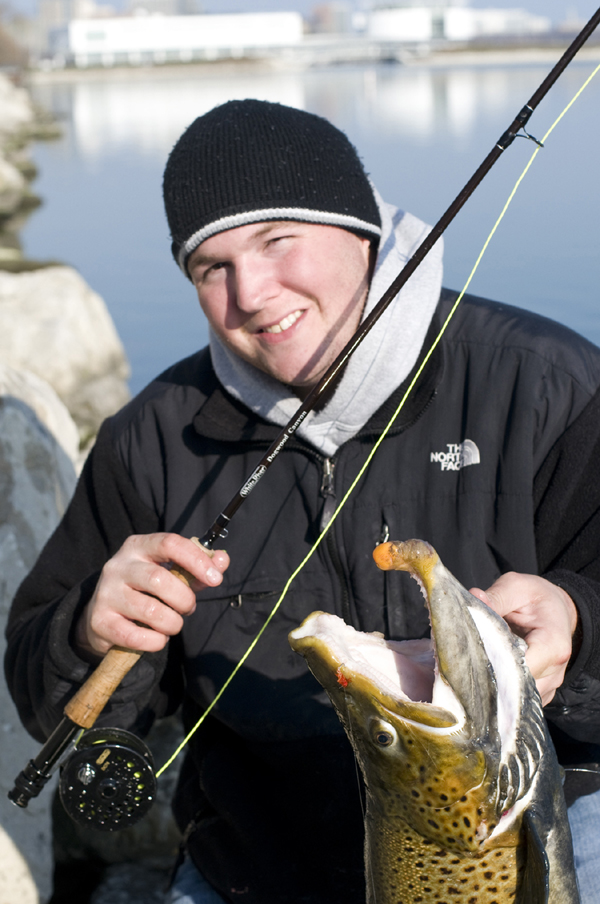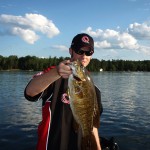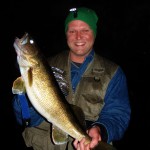By: Michael Planthaber – Date Posted: November 22, 2010
The Great Lakes of North America are the backbone of a $7 billion dollar fishing industry. Many of its angling participants chase salmonoids miles offshore in deeper and colder waters. To make it that far and have a fair shot at success, one must need a sea-worthy vessel, a variety of electronics (fish finder, GPS system, marine radio to name a few), trolling gear, and variety of trolling tackle. For those who are not outfitted for the sport, hiring a charter service seems like a cost-saving alternative. That is what salmon and trout fishing is all about for most fishermen during much of the year.
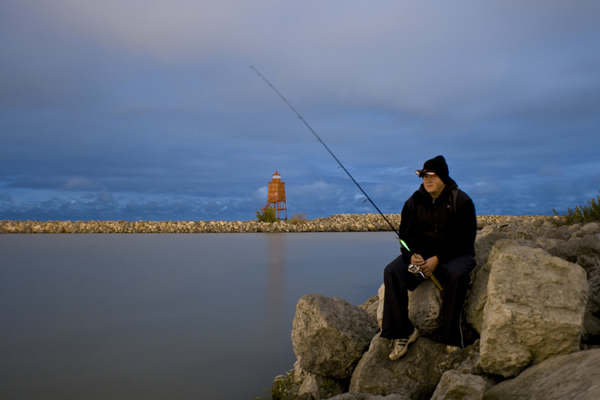
The outlying states of the Great Lakes sustain the fishing industry by producing salmonoids through fish hatcheries and infiltrate the system with generations of fish. All of these fish, whether they were born in a hatchery or developed in a tributary, are genetically programmed to return to their birth grounds and reproduce. There are some fish, such as the Chambers Creek and Skamania strains of Steelhead, will migrate in the early spring through the summer months from the deep offshore waters, but the majority of the salmonoids will make the journey during the fall months. Most notably (and in chronological order), the Chinook Salmon, Coho Salmon, Brown Trout, and Steelhead (also known as the Rainbow Trout). When these fish return to the shorelines and tributaries to perform their biological duty of passing their genetics, this gives the avid angler on foot a fair shot at landing a prized fish; All species noted above are capable of reaching 15 lbs. in weight, with a few outliers that will hit 20+ lbs.
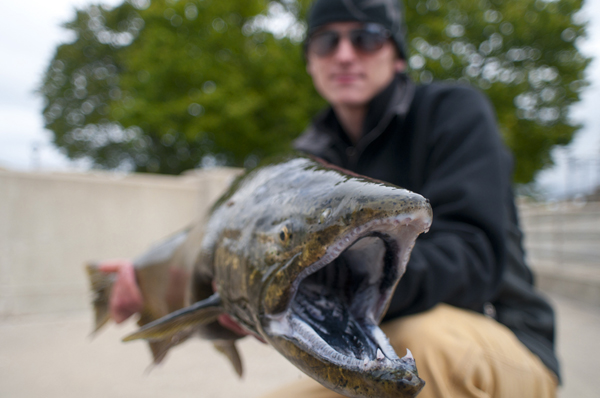
Arguably the most prized and sought after species is the mighty Chinook (King) Salmon. When the run is on, anglers from many states will hit the shorelines with a variety of angling methods. For the early runners, the most common tackle choice is a longer rod equipped with some fairly strong line (10-14 lb. test). Fishermen, women, and children hurl spoons and crankbaits off of piers for the early runners, and those willing to put in the long hours of casting are usually rewarded. Once the salmon cherry is popped, many will say that an addiction has begun, and some will even fish throughout the night with glow in the dark baits looking to connect with a fish.
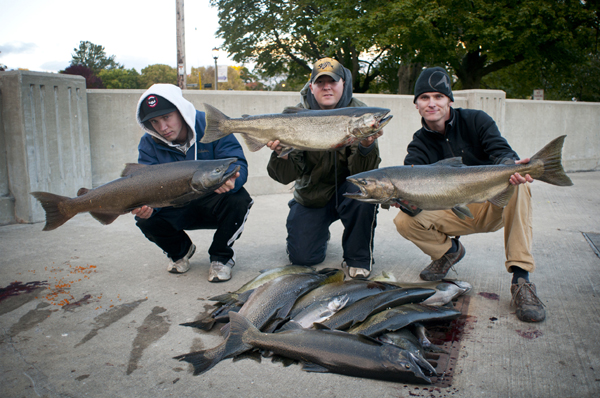
The Kings will eventually reach the end of their life cycles, and their bodies display the evidence of maturity. Male Kings will turn darker and tan in color, and the females ripen with caviar. Both genders will eventually stop eating and focus on the spawn and take to within shoreline harbors and swim up any current that pushes out to the lake. Sleeper spots include man-made discharges and smaller tributaries with less angling pressure.
During the peak of the spawn, fly fishermen target the streams and rivers, mostly swinging egg patterns. The fish migrate upstream throughout the nighttime hours, and usually retreat to the deeper pools during the daylight hours with hopes of avoiding visual confrontation with any predators on land. Daytime fishing is done with stealth, and usually with the aid of polarized sunglasses.
For the fish lost within the migration, harbors are an eventual dead-end, and lead to great fishing opportunities for the shore bound angler. Dragging shallow to mid-depth crankbaits often yield results as the kings will hit the cranks simply out of pure aggression. Some fishermen claim that the severe blow of a King smashing a bait can be felt throughout the length of the rod, through the angler’s body, and down to the toes.
Another common method for retracting Kings in the harbors is done by floating spawn 4 to 10 feet deep below floats. In order to do so, you will need to catch a female or seek en egg donation from someone.
Usually by the end of October, the Kings have all but died off. The coho salmon are usually reaching the peak of their migrations. The same methods used for chinook are also applied.
The end of one shoreline fishing chapter begins the next, which leads to brown trout fishing. This is probably one of the more consistent bites to pick up on and angling results that are often more predictable.
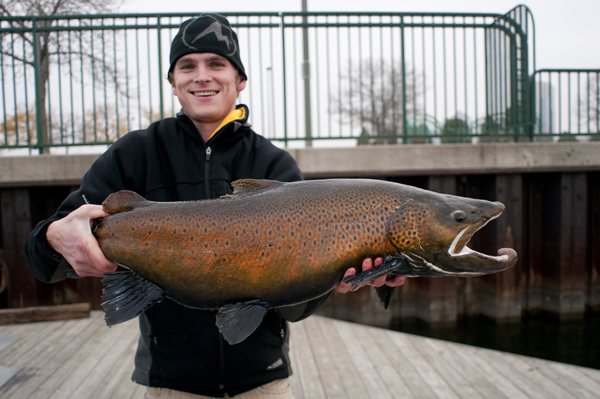
The browns, just like the Kings, return to the shorelines from the depths of the Great Lakes for their turn to spawn. Many fish will make it to the tributaries, but a fair number end up in the harbors. Due to yearly stockings, many browns are planted in the harbors each spring and fall. Thus the fish return to the locations where their original life cycles began.
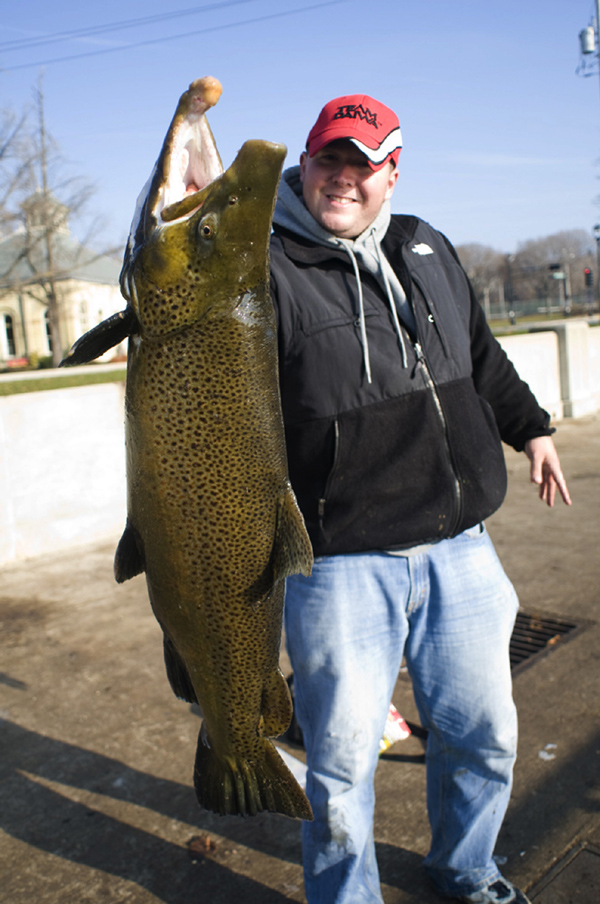
Harbor fishing for browns is probably one of my most favorite seasons of the year. A basic setup consisting of light line (4-6 lb. test flourocarbon), a slip float, and a tube jig (1-1.5”) tipped with a wax worm or two should result in some fish. The approach is simple: Cast, let tube fall, twitch the float, and allow for the tube to fall. For this float fishing approach, a bait placed higher in the water column is most effective. Trout look for food above them, and the tasty flutter fall action of the tube bait is simply irresistible.
Brown trout eggs are highly valued. Some anglers refer to the spawn as “gold” due to their effectiveness to catch all species of trout. Landing an egg-laden female full of spawn should all but guarantee continued success for trout fishing with spawn throughout the remainder of the run if one was looking for a different approach to catching these fish.
Another simple, yet effective, method for catching trout in harbors is casting Rapala Husky Jerks, and other stick baits, and even rolling a smaller spoon.
Around the same period when the browns show up, you should expect to see some steelhead. Just as the method for catching brown trout, the same is said for steelies. It is not uncommon to catch both species in the same day using the same baits. Fall steelhead display their full spawning colors, with the males sporting red cheeks and horizontal red stripes along their body. Landing a steelhead will always create a fantastic photo opportunity for those fortunate enough to land one.
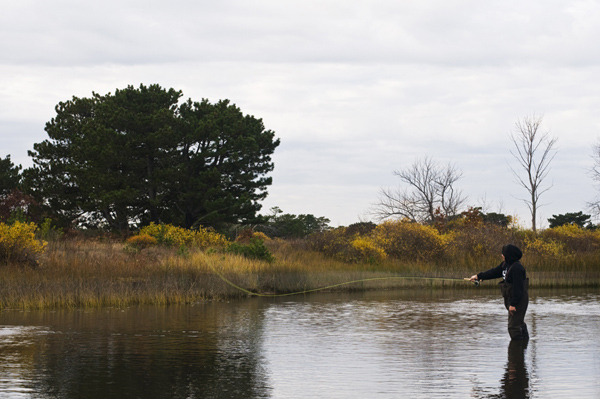
The fly fishermen whom are more tolerant to the colder weather will also take to the same streams and rivers the kings had once occupied. The spawning grounds are shared by each of these species. Many trout will hold in the rivers throughout the duration of the winter months, and for those willing to put in the effort during the coldest months of the year, the ending results can be tremendous.
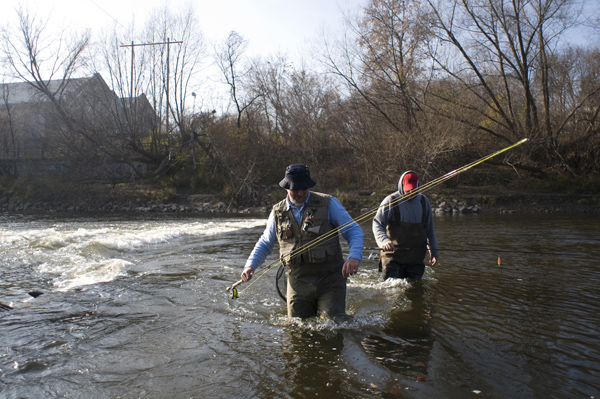
Unlike the king salmon and cohos, brown trout and steelhead are able to reproduce multiple times throughout their lives and return back to the Great Lakes after spawn. Catch and release is a recommended practice for most of the fish.
For more detailed reports and information on fall and winter fishing for Great Lakes Salmon and Trout, browse through the archived fishing reports and discussions on fishing-headquarters.com – a wealth of information is available free through the world wide web.
